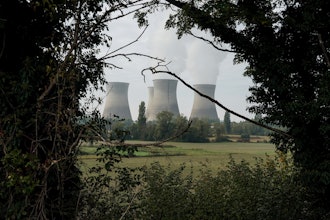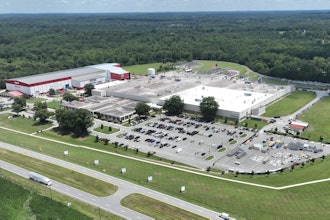
Thermal energy storage systems allow people to capture extra warmth or coolness and use it later. Traditionally, they’ve used it to meet the future climate control needs in buildings, but many researchers now believe optimizing recovery efforts from stored energy could do more. Such outcomes are most likely if people find the best ways to maximize thermal energy efficiency through heat recovery and storage efforts.
Demonstrating Peak Load Shifting in the Community
Pursuing innovations often requires revisiting past techniques. The team at Stor4Build — a multilaboratory consortium established in late 2022 — takes inspiration from a practice common centuries ago, where households relied on ice blocks to cool rooms or protect perishable food.
The group hopes to find cost-effective and simple thermal energy storage solutions that draw upon what people did hundreds of years ago while improving them with new controls, materials, energy standards and more. Some Stor4Build projects use possibilities that can alter when excess heat or coldness gets generated, captured and reused.
Their five-year plan culminates in demonstrating a community-level peak load-shifting approach to thermal energy storage. The initiative’s primary goal is to at least halve power consumption for thermal loads in households for four to six hours.
Stor4Build envisions a three-pronged approach to thermal energy storage, encompassing materials development, systems integration and component integration. There are also four main research areas — materials optimization and manufacturing, modeling and analysis, system optimization and integration, and market, policy and equity.
Those involved recognize how maximizing thermal efficiency will be a collaborative effort. They’ll create two steering councils and receive input on market and policy, workforce implications, and other necessities. Staff at Stor4Build know improving thermal energy storage with heat recovery and other means requires an open mind and feedback on numerous possibilities.
Improving Thermal Energy Efficiency With Transformer Waste Heat
Many people are interested in harnessing the energy from naturally occurring processes or operations. For example, a transformer’s magnetic sheets expand and contract 120 times each second when the equipment runs at 60 cycles per second. That movement can cause transformers to emit a humming sound. Researchers have explored whether piezoelectric energy from repetitive movement could charge a phone or meet another common need.
However, case studies suggest improving thermal energy efficiency by using transformers’ waste heat in nearby communities is a worthwhile pursuit. In one example, the United Kingdom’s National Grid partnered with SSE Energy Solutions to capture and use the machinery’s waste heat to heat the local area. Estimates suggest this approach could reduce emissions by more than 40% compared to conventional gas-led systems.
National Grid has 350 substations and the organization’s leaders believe this waste heat-capturing method will suit them all. Additionally, SSE is a founding member of the Heat Networks Industry Council, which is working to explore the potential of zero-carbon heat networks throughout the United Kingdom. Participants hope they’ll find options that could account for approximately 20% of the United Kingdom’s heat needs by 2050.
Developing a Low-Profile Heat Recovery Method
One way to make stored thermal energy more accessible is to create user-friendly heat-capturing and recovery solutions compatible with numerous pieces of equipment. Doing this should optimize thermal efficiency by increasing the assets compatible with thermal energy storage.
A research team created a flexible thermoelectric generator that conforms to the shapes of a building’s hot water pipes or even a vehicle’s exhaust pipe. Participants say this is an early effort to trap and convert heat to enable thermal energy efficiency with cost-effective devices that attach directly to heat-producing assets.
Some thermoelectric generators previously designed by this group were rigid devices that showed more thermal efficiency than commercially available products. However, a new manufacturing process allows them to make flexible options with even better efficiency and higher power outputs.
Making the device begins by placing six couples along a thin strip. Next, flexible metal connects 12 strips, resulting in a 72-couple product. Researchers also found putting liquid metal between each strip’s layers improved the thermoelectric generator's performance. Maintaining gaps between the strips provided flexibility and allowed people to alter the thermoelectric material and device area. They believe this design choice will allow for the optimization of thermoelectric devices for various heat sources.
When the researchers tested their invention on a gas flue, it offered 150% higher power density than similarly advanced units. They also created a scaled-up version measuring approximately 3 inches squared. When put on a hot surface, that one showed a 115% power density advantage and a 56.6-watt total power output. Considering industrial power plants have pipe networks spanning hundreds of feet, the researchers hope their generator could provide kilowatts of energy from a normally wasted source.
Exploring a New Thermal Energy Storage Method
As people find feasible ways to turn wasted resources into energy, they often realize the possibilities offer multiple benefits. For example, applying a thermal treatment to grate incinerators can capture radiant heat and reduce pollution.
Maximizing thermal efficiency may require investigating new methods, too. An option called aquifer thermal energy storage (ATES) could reduce building-associated natural gas and electricity consumption while preventing blackouts caused by increased grid demands during extreme weather.
While investigating storage options to help with renewable energy fluctuations, the team wondered if geothermal solutions would suffice. ATES heats and cools buildings by storing energy in naturally occurring underground water. It involves bringing the liquid up to heat it at the surface during the summer, then pumping it underground for storage in the winter.
The researchers found the water stayed reasonably warm because the Earth is a good insulator. Additionally, this method does not drain drinking water resources because it relies on comparably deeper aquifers.
Testing this approach involved using a computational model of a Chicago neighborhood that included 58 single-family, two-story homes with typical heating and cooling setups. The experiments used future climate projections to determine the impact of climate controls on the neighborhood’s energy budget. Scientists also created a microgrid simulation for the community, incorporating ATES and renewable energy.
Results indicated using ATES on a renewable energy-powered grid could enable a 40% reduction in the use of petroleum-containing products. The outcomes also showed this approach costs 15%–20% more than existing energy storage technologies. However, the researchers believe a few years of development could significantly cut costs, making this option more affordable and attractive.
Optimizing Thermal Energy Efficiency Through Heat Recovery
These exciting examples represent some of the many ways science has highlighted new ways to improve thermal energy storage by targeting heat capture and recovery methods. Additional possibilities in these areas could increase thermal energy efficiency for buildings, industrial assets and more.























